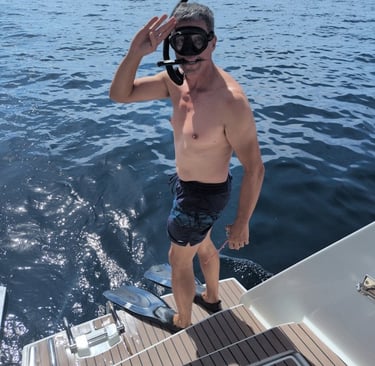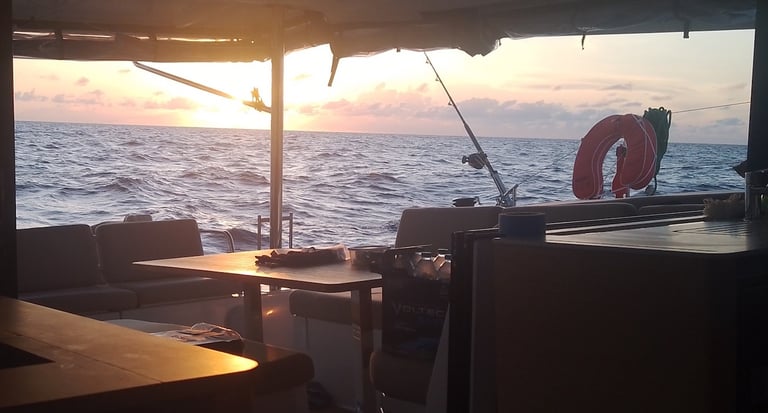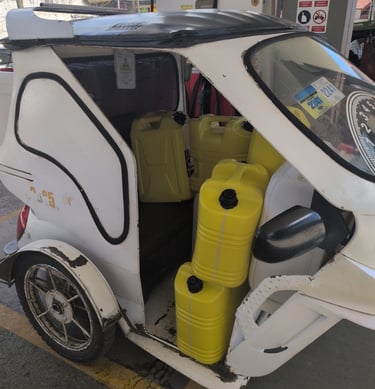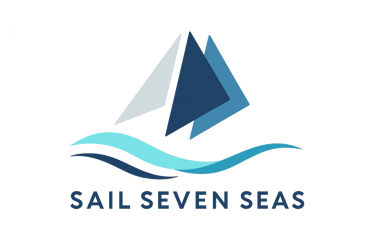The Long Way Round: Piracy, Bureaucracy, and Palawan's Chaos
This blog reviews our choice of avoiding 1,250 nautical miles of brutal headwinds verses a longer, smoother route through Malaysia and the Philippines. This route, however, needed to mitigate the risk of piracy in the Sulu Sea. To counter this, Matt and I chose a deliberate, more northerly path, sailed with the AIS turned off, and maintained a sharp watch under the cover of the new moon to get through safely. In addition to security challenges, the journey was constantly interrupted by abundant floating rubbish, forcing the us to dive under the boat to clear props and rudders of seaweed and rubbish. Upon arrival in the Philippines, a planned quick refuel stop in Puerto Princesa was immediately complicated by customs and immigration, who stretched the clearance process into a full-day bureaucratic affair – apart from entering Galapagos, the most forms I’ve seen anywhere. This provided a welcome opportunity to explore the city, where we saw the stark contrast of luxury cars queuing at drive-thrus alongside the simple, chaotic life of shanty villages and tricycle taxi operators. The intense road chaos, with drivers using every inch of road space and tooting horns, left us with the realisation that a ride in a tuk-tuk was, ironically, the most dangerous part of sailing.
Jason Haigh
10/26/20253 min read


Going Dark to Avoid Pirates
A challenge of the Phuket to Opua, NZ, delivery wasn't the distance, but the route. We ruled out Australia's top end, the Torres Strait, and the Barrier Reef early on - it meant punching into 15-25 knot headwinds for over 1,250 nautical miles – this would have been hard on the (new) boat and crew. Our chosen alternative was a smoother route through Indonesia, Malaysia, and the Philippines, then on to PNG, Port Vila, and finally NZ. This new path, however, introduced the critical factor of piracy in the Sulu Sea. To counter the danger zones around southern Mindanao and the Sulu Archipelago, we chose a deliberately longer, more northerly route. This decision structured our exact transit: from Kuching to Puerto Princesa, Port Bonbonon, and into the Bohol Sea, keeping to the north of Mindanao. I’m pleased that we’ve not had any more of those incidents where fishing boats kept aiming to intercept us – however, with our deterrents at the ready, we’ve been keeping a sharp watch, turned off our AIS and have enjoyed the darkness from the new moon.


Floating Hazards
We're finding it necessary to dive often to check the keel, rudder, and props for fouling from the endless stream of floating seaweed and rubbish. The whole boat shudders violently when we snag something big, like that hessian rice sack that wrapped around the prop. Smaller issues, however, reveal themselves more subtly—through increased fuel consumption and slightly reduced speeds. The silver lining? It gives us a great excuse to stop, drift, and have a cooling dip. Thankfully, the only crocs in the Philippines likely to bother you are the discarded plastic ones (unfortunate for the environment, though 😒).


The Smell of Land
As we closed in on Puerto Princesa, the first thing that hit us was that unmistakable, fragrant (?) smell of land. Our stop was meant to be a quick refuel, but customs and immigration turned the clearing-in process into a whole-day affair - luckily we had the salubrious Abanico Yacht Club to hang out in while we waited. To salvage our schedule, we chose to clear out at the same time. This bureaucratic hurdle, however, handed us an unexpected bonus: a chance to explore and experience the city and its surrounds.
Sailing’s Most Dangerous Activity
Once back on terra-firma, I was immediately struck by the stark gap between old and new; decent cars idling in the Starbucks drive-thru queue versus a simpler existence in the shanty villages, where people run local shops and ferry passengers in tricycle taxis. The road chaos is something else; drivers utilize every single inch of pavement, turning junctions into a chaotic blur of traffic and tooting horns. It makes you realise that a ride in a tuk-tuk-trike is defo more dangerous than sailing around the world. To top this off, Matt had to organise a tuk-tuk-trike to ferry the jerry cans of diesel back and forth, from servo to the dock – Matt definitely living on the edge; sitting on top of hundreds of litres of fuel in a tiny metal box next to a crazed moped driver!




Join Us For Adventure
Check our adventure calendar to join us and experience these amazing places!


Join Us In Adventure
A unique sailing adventure where you get to adjust the passage plan to include places that interest you!
If the weather allows and crew think it's cool then it'll happen.
Connect
info@sailsevenseas.com
+61 406 708002
© 2025. All rights reserved.
